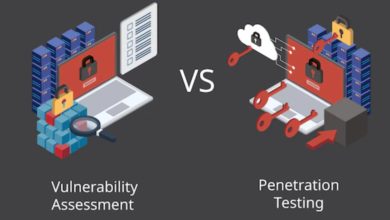What is Risk Management In Cybersecurity?
Usually, people have doors, locks, walls, and windows to protect their property and themselves. This is risk management at a basic level. You can go a step further by installing a security and fire alarm to minimize risks also.
What Is Risk Management In Cybersecurity?
In the cyber world, you don’t need vaults and locks to manage risk. Integration of technologies, security strategies, and end-user education is necessary to prevent cyberattacks. Many cyber-attacks happen to steal data or information, defame a firm, or even compromise the firm’s system.
Over the years, cyberattacks have been on the rise. Subsequently, this has motivated security experts to enhance cybersecurity strategies to tame the menace. Ideally, the management of risk in the cyber world has heavily borrowed from real-world practices. It merely requires the identification of existing threats and vulnerabilities and after that applying the right administrative actions. This ensures that the company is safe from cyberattacks in the future.
What Is Cyber Risk?
Any risk of financial loss, compromise, or damage directed to your business can get termed as cyber risk. It is important to note that cyber risk can affect any organization that relies on digital technology, networks, or information. Cyber risk can result from;
• Online trading
• Your online activity
• Storage of personal data on IT systems and networks
• Your IT systems and networks failing
Cyber Risk Assessment
The assessment of your organization’s cyber risk entails identifying, analyzing, and evaluating all the potential cyber threats. This process requires you to take a look at the entire IT infrastructure of the organization and then try to identify possible threats that might arise from;
• Vulnerabilities within your systems
• People, process and technologies
• Cyberattacks
Risk Management In The Cybersecurity
This form of management involves;
• Risk strategy – determine the processes and controls that your business needs
• Risk analysis –requires you to understand the particular threats facing your business
• Implementation of risk solutions – implementing your security measures
• Risk training – entails training the staff on their role in the cybersecurity
• Monitoring – the reviewing and testing the effectiveness of your security measures
• Risk transfer – transferring your risk to an insurance firm
Getting Your Own Cyber Risk Management System
Like is the case with any risk management system, you will first need to determine what needs to be protected. Different firms require different types of cybersecurity management systems. An organization will have unique technology infrastructure and potential risks different from another organization. As such, you can’t have a single solution to cater to all types of organizations.
Every organization is unique, and its technology infrastructure cannot be the same as other firms’. Every organization then has unique potential risks. In businesses such as banks, there is a need to deal with regulatory concerns on top of business concerns. Thus, a system for such a company should accost all of the above matters.
An organization must document fully all its implemented procedures that touch any of the firm’s activities and which can be deemed to be a security risk.
Risk Management Process
The best approach to setting up the best method is to develop a cybersecurity outline from each aspect of the business. This will help you determine the best risk-averse postures for the company. You should follow this with the mapping of data. Similarly, this will then help your organization when it comes to making decisions on how best such data can be used and controlled to reduce risk. It is essential to search through the firm’s system to pick out fragmented data that might be hidden or stored in the wrong locations. By this, you reduce the risk of losing valuable and sensitive data.





